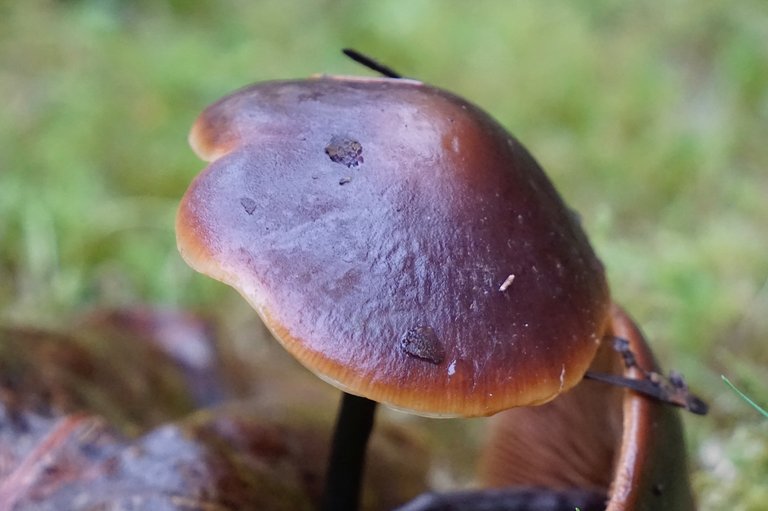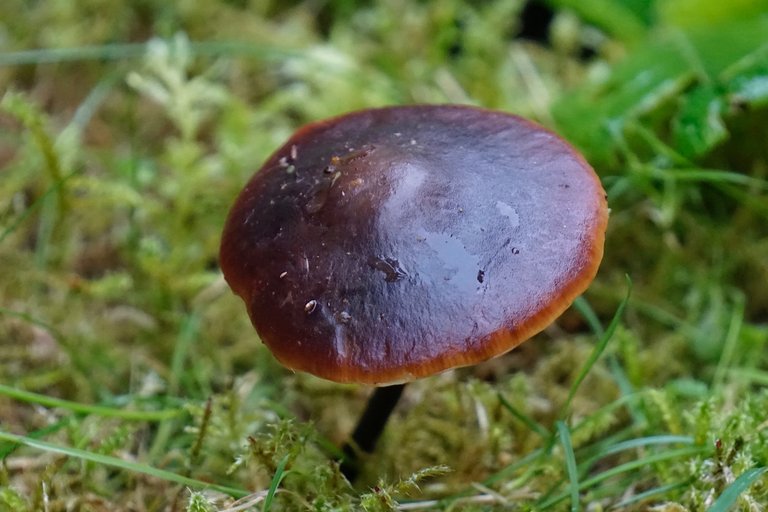Cucumber Cap (Macrocystidia cucumis)
Hey everyone, I hope you are all doing well and you had a great start to the new weekend plus a day full of interesting experiences! In this post I would like to share something about nature and hope you are able to expand your knowledge a bit.
Recently I had the opportunity to photograph a special mushroom which is also known under the name Cucumber Cap or scientifically Macrocystidia cucumis and can be found as a relatively frequent fungus on different continents such as Europe, Africa, America or Asia. It is most common in Europe and even if it grows on other continents it is in itself rarer there, but this always depends on the region as well as the conditions that prevail there and usually it grows individually or in small groups. First of all, it is important to mention that it is not an edible mushroom and should be warned against consumption, but I have decided to present the mushroom in more detail because of the unique properties. Theoretically, the mushroom is harmless from the toxicity, but it can be described as inedible in taste and one of the most striking characteristics is the smell reminiscent of cucumbers which makes it easy to distinguish it from others and the season starts already in summer and if you are lucky, it can even be found in the cold months. When it comes to the location, the cucumber cap is adaptable and usually grows on roadsides, on meadows as well as in foliage or coniferous forests and the hat has a brown color and also the slats have a similar color which can look different depending on the specimen and can also sometimes have a white color. Also striking is the typical black stem which has a lighter or darker color depending on age and it can also be considered a rather inconspicuous mushroom which is often overlooked because of its size and especially because of the unusual smell which is reminiscent of cucumbers is particularly interesting.
Thanks a lot for stopping by and I hope you could learn something new about nature! I captured these pictures with my Camera Sony Alpha 6000 plus 55-210 mm lens.



These mushrooms are usually found everywhere. But I have a problem in my mind. You explain it very well
Thanks for the feedback :)
You know that they look a lot like some that I have seen attached to the eels, without a doubt they are beautiful, greetings
Many thanks
I don't know much about this type of mushroom, but as always you wrote a very nice post, which I learned a lot from reading.
It's always a great motivation to hear that you appreciate my posts so much :)
Very good to know about it and you have posted many types of mushrooms I can't remember all of them but I remember, all these types are really very good and learn alot about them. It shows the power of nature.
Plants photography always soothes our nerves and feels fresh to see them.
Thanks for the sign of appreciation :)
https://x.com/lee19389/status/1847611884419125581
#hive #posh
Congratulations @elevator09! You have completed the following achievement on the Hive blockchain And have been rewarded with New badge(s)
Your next payout target is 20000 HP.
The unit is Hive Power equivalent because post and comment rewards can be split into HP and HBD
You can view your badges on your board and compare yourself to others in the Ranking
If you no longer want to receive notifications, reply to this comment with the word
STOPAs a microbiology student it's such a interesting and useful thing for me. Thanks for sharing knowledge
In recent year I studied mycology (fungus) in it but I haven't learn about that mushroom
It's having benefits or side effects too (fungus).
I am glad to hear that you were able to expand your knowledge through my contributions @emmyrosum
Most of the time, I always use to wonder whether those mushrooms found in the forest can be eaten
Thanks for the feedback